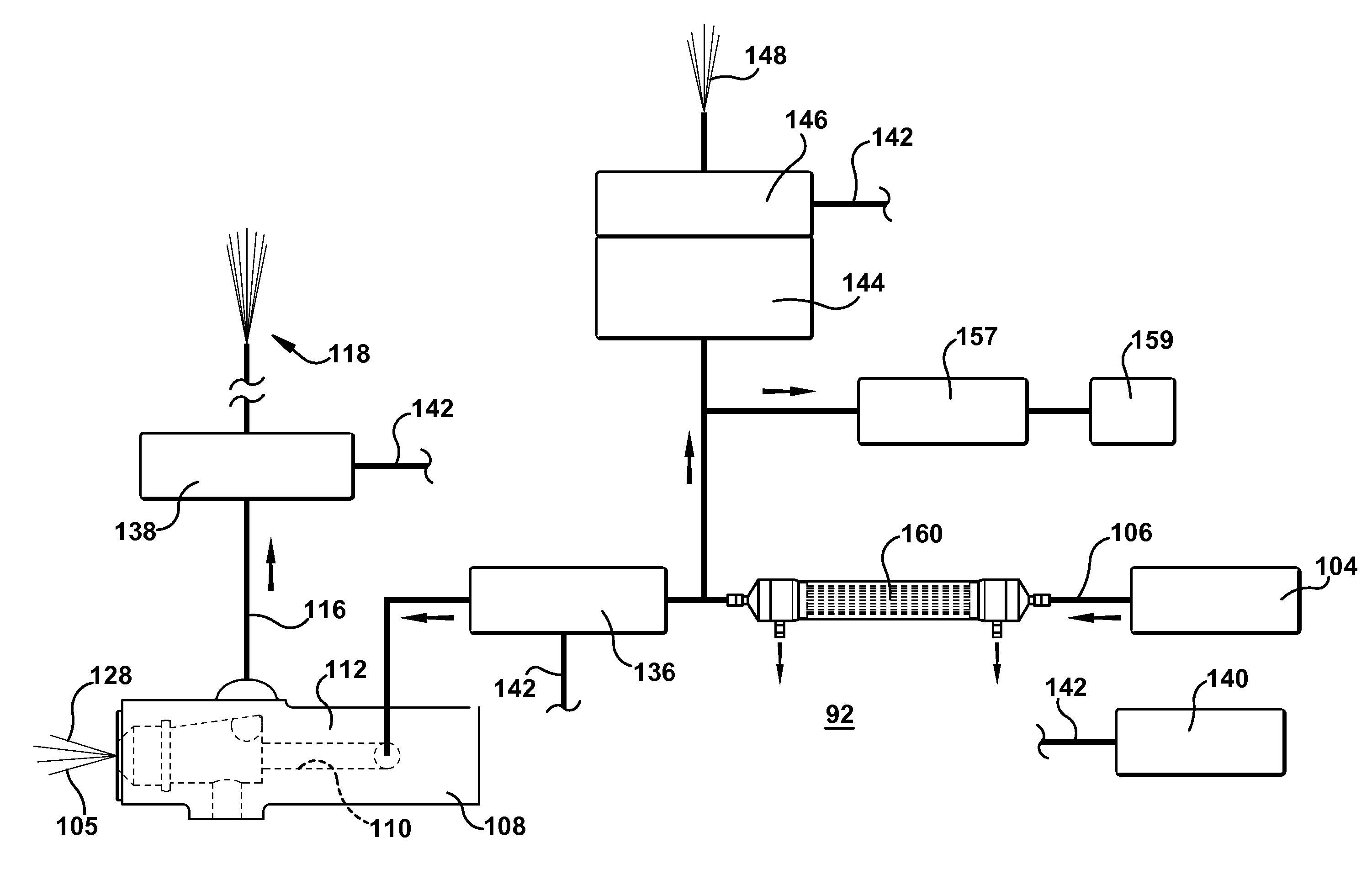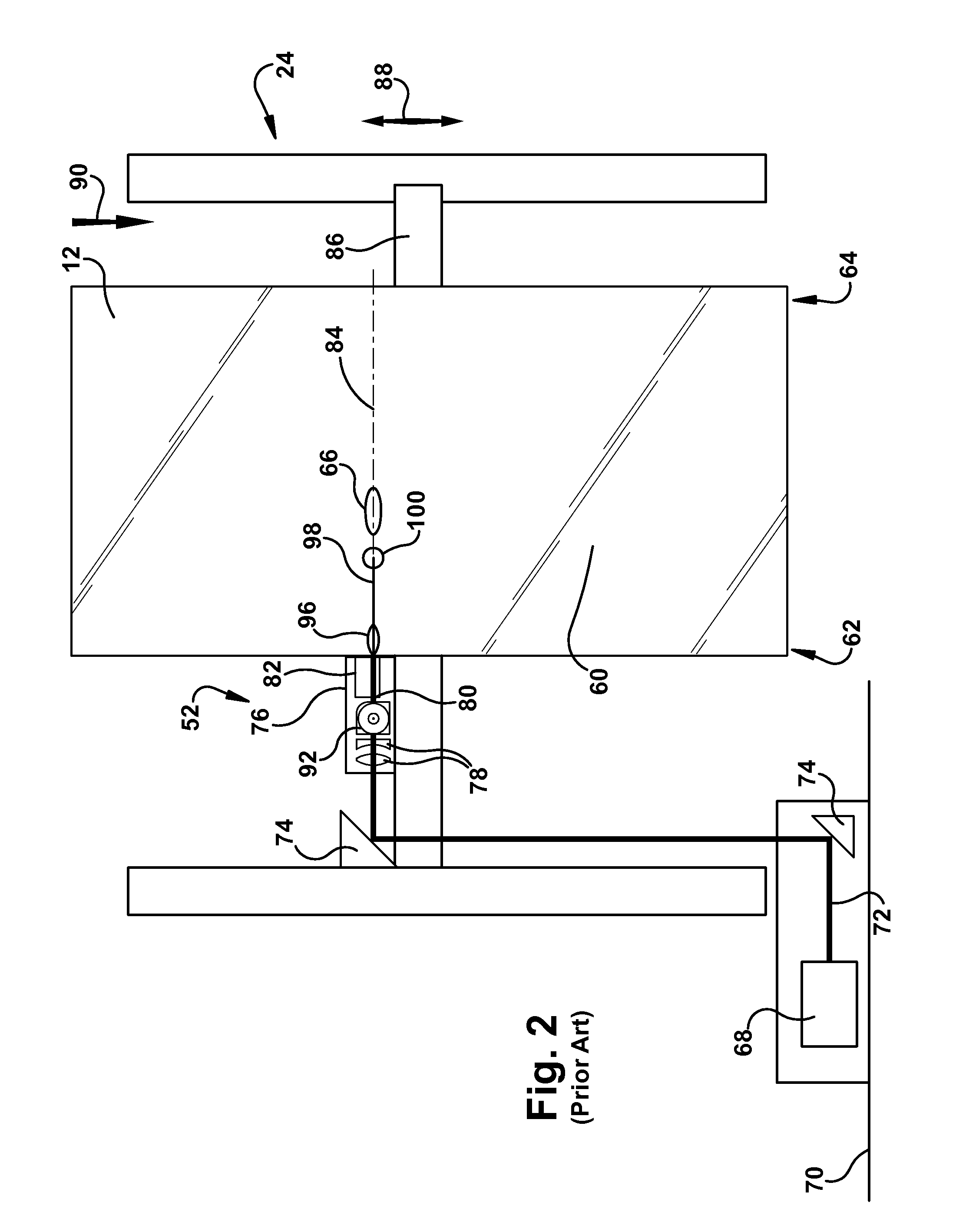Preventing gas from occupying a spray nozzle used in a process of scoring a hot glass sheet
a technology of hot glass and spray nozzle, which is applied in the direction of glass tempering apparatus, separation process, liquid degasification, etc., can solve the problems of discontinuous crack propagation of glass sheet, laser scoring process failure, etc., and achieve enhanced spray nozzle performance.
- Summary
- Abstract
- Description
- Claims
- Application Information
AI Technical Summary
Benefits of technology
Problems solved by technology
Method used
Image
Examples
example
[0048]This example describes operation of the purge nozzle. The following is a pre-purging sequence. The pre-purging sequence is conducted only to remove gross air bubbles from the system such as when a nozzle tip is replaced or during system start up. First, the primary solenoid valve is turned off and the purge or secondary solenoid is turned off. The water pressure is on. The water supply pressure within the laser scoring environment ranges from about 3 to 70 psi. The pressure is provided by an air charged pressure pot. The pressure transducer reports pressure as a function of time in the water line. The air accumulator purge valve is closed. Next, the primary solenoid is turned on. The air accumulator valve is open for 5 seconds and then closed. The secondary solenoid is on for about 10 seconds at 10 hertz oscillation. This creates turbulent flow in the purge nozzle to disrupt bubbles located there. The secondary solenoid is then turned off. The primary solenoid is turned off. T...
PUM
| Property | Measurement | Unit |
|---|---|---|
| speed | aaaaa | aaaaa |
| temperature | aaaaa | aaaaa |
| temperature | aaaaa | aaaaa |
Abstract
Description
Claims
Application Information
 Login to View More
Login to View More - R&D
- Intellectual Property
- Life Sciences
- Materials
- Tech Scout
- Unparalleled Data Quality
- Higher Quality Content
- 60% Fewer Hallucinations
Browse by: Latest US Patents, China's latest patents, Technical Efficacy Thesaurus, Application Domain, Technology Topic, Popular Technical Reports.
© 2025 PatSnap. All rights reserved.Legal|Privacy policy|Modern Slavery Act Transparency Statement|Sitemap|About US| Contact US: help@patsnap.com



